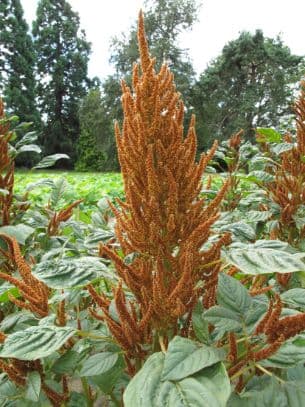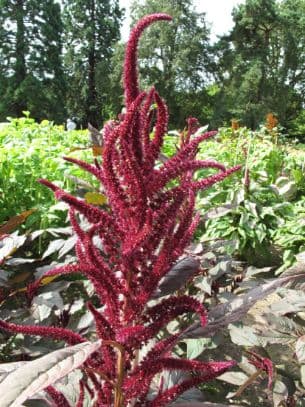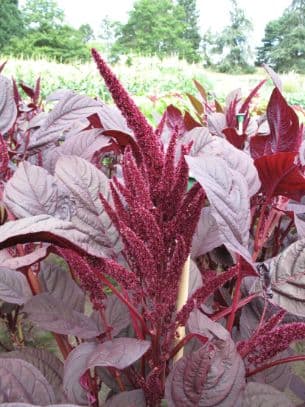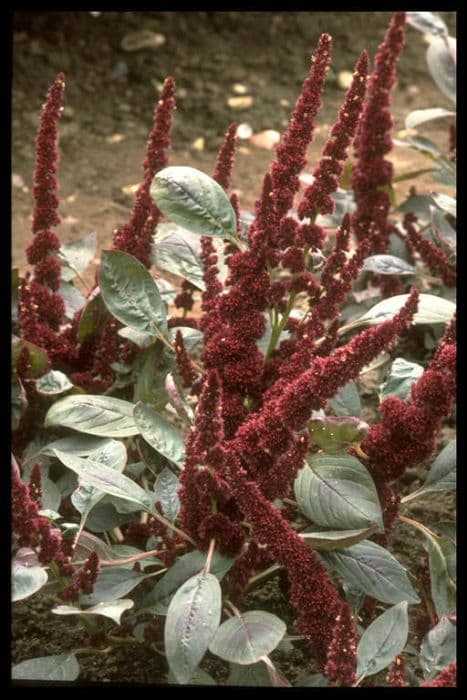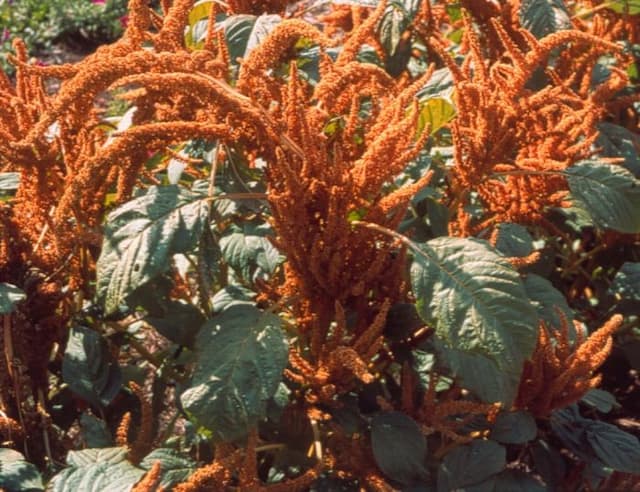Spinach Spinacia oleracea 'Medania'

ABOUT
Spinacia oleracea 'Medania', commonly known as spinach, is a leafy green vegetable with a rosette growth pattern, where the leaves radiate from a central point near the soil surface. The leaves of the 'Medania' variety are typically smooth, tender, and deep green in color, often with a slightly crinkled texture that gives them a distinct appeal. These leaves are shaped like an elongated oval or spade with a substantial size, making them easy to harvest. The margins of the leaves can be gently curved or flat, and they are held aloft by sturdy yet flexible stems that are lighter in color compared to the dark green of the foliage. When allowed to mature or under the right growing conditions, this spinach variety can produce small, inconspicuous flowers that eventually give way to seeds. The overall visual impression of the 'Medania' spinach is one of lush, vibrant greenery, with a healthy, inviting appearance commonly associated with nutritious leafy vegetables.
About this plant
 Names
NamesSynonyms
Spinach, Common Spinach, Garden Spinach
Common names
Spinacia oleracea.
 Toxicity
ToxicityTo humans
Spinacia oleracea, commonly known as spinach, is not toxic to humans and is widely consumed as a vegetable. However, consuming spinach in large amounts may lead to negative health effects due to the presence of oxalates, which can inhibit calcium absorption and contribute to the formation of kidney stones in susceptible individuals. Additionally, spinach contains purines, which can be converted into uric acid in the body and may exacerbate gout in people who are prone to it. In general, spinach is considered safe and healthy when eaten in moderation as part of a balanced diet.
To pets
Spinach is not typically considered poisonous to pets, but it is important to exercise caution. For dogs and cats, spinach might cause digestive upset if consumed in large quantities due to its high fiber content. Pets with certain health conditions, such as kidney disease, should avoid spinach because of its oxalate content, which can contribute to the formation of bladder and kidney stones. While moderate amounts can be part of a healthy diet for pets, it's always best to consult with a veterinarian before adding new foods to your pet's diet.
 Characteristics
CharacteristicsLife cycle
Annuals
Foliage type
Deciduous
Color of leaves
Green
Height
1 foot (30 cm)
Spread
1 foot (30 cm)
Plant type
Herb
Hardiness zones
2
Native area
Southwest Asia
Benefits
 General Benefits
General Benefits- High in Nutrients: Spinach 'Medania' is a rich source of vitamins and minerals, particularly vitamins A, C, and K, as well as iron and calcium.
- Diet Friendly: Spinach 'Medania' is low in calories and has a high water content, making it an excellent addition to weight loss diets.
- Versatile Ingredient: Spinach 'Medania' can be used fresh in salads, cooked as a side dish, or incorporated into a variety of recipes, making it a versatile vegetable to have in the kitchen.
- High in Antioxidants: Spinach 'Medania' contains antioxidants like flavonoids and carotenoids, which help protect the body against free radicals.
- Supports Bone Health: With its high vitamin K content, spinach 'Medania' contributes to the maintenance of strong and healthy bones.
- Good for Eye Health: The carotenoids lutein and zeaxanthin found in spinach 'Medania' are known to promote eye health and reduce the risk of macular degeneration.
- Supports Digestive Health: Being high in fiber, spinach 'Medania' aids in digestion and helps maintain good digestive tract health.
- Easy to Grow: Spinach 'Medania' is relatively easy to cultivate in home gardens, providing a ready source of fresh greens.
 Medical Properties
Medical Properties- Rich in vitamins and minerals: Spinach is a good source of vitamins A, C, K1, as well as several B vitamins, and it also contains essential minerals such as iron and calcium.
- Eye health: The plant contains lutein and zeaxanthin, two types of carotenoids that are known for their role in eye health and prevention of age-related macular degeneration.
- Anti-inflammatory properties: Spinach contains compounds that may have anti-inflammatory effects, which could be beneficial in reducing inflammation-related diseases.
- Antioxidant content: High in antioxidants, such as beta carotene, which can combat oxidative stress and help in preventing chronic diseases.
- Supports bone health: The high levels of vitamin K in spinach contribute to maintaining bone health and may help prevent osteoporosis.
- Blood pressure regulation: The nitrates in spinach have been linked to lowering blood pressure and promoting heart health.
 Air-purifying Qualities
Air-purifying QualitiesThis plant is not specifically known for air purifying qualities.
 Other Uses
Other Uses- Natural dye: Spinach leaves can be used to create a green pigment for natural fabric dyes.
- Ink production: Spinach juice has historically been used as a source of green ink for artwork or writing.
- Calligraphy: Due to its staining properties, spinach juice can be used for practicing calligraphy on certain types of paper.
- Feed for livestock: Leftover or inedible spinach can be used as feed for livestock such as pigs and chickens.
- Companion planting: Spinach can be planted alongside other crops like strawberries to help enhance growth and repel certain pests.
- Science experiments: Spinach can be used in educational settings to demonstrate photosynthesis and plant biology.
- Bio-plastic production: Research has shown that spinach leaves can be utilized in the production of bio-degradable plastics.
- Envelope glue: The adhesive on envelopes can be made with a starch solution derived from spinach.
- Photography: Spinach extracts may be used in some alternative photography processes as a sensitizing solution.
- Crafting: Spinach stems and veins can be included in paper-making for texture and color.
Interesting Facts
 Feng Shui
Feng ShuiThe Spinach is not used in Feng Shui practice.
 Zodiac Sign Compitability
Zodiac Sign CompitabilityThe Spinach is not used in astrology practice.
 Plant Symbolism
Plant Symbolism- Strength and Power: Spinach, known for its iron content, is often associated with strength and vitality. It gained popularity through the character Popeye the Sailor, who used spinach to gain superhuman strength.
- Health and Nutrition: As spinach is a nutrient-rich vegetable, it represents good health and well-being. It's a symbol of a healthy lifestyle and dietary choices that lead to physical wellness.
- Resilience and Persistence: Spinach is a hardy plant that can grow in harsh conditions, symbolizing the human qualities of resilience and the ability to thrive despite challenges.
- Growth and Prosperity: The vigorous growth of spinach plants can symbolize personal or economic growth and the idea of flourishing in life.
- Purity and Cleansing: Due to its high chlorophyll content, which is cleansing for the body, spinach symbolizes purification and the rejuvenation of both body and mind.
 Water
WaterSpinach 'Medania' requires consistent moisture, especially during the growth period. It should be watered deeply once a week, providing about 1 inch of water which ensures moisture reaches the root zone. In hotter, drier conditions, spinach might need watering twice a week. You can measure this by using approximately 0.6 gallons of water per square yard of soil each week, adjusted for rainfall or higher temperatures. It's crucial to avoid overwatering as this can lead to root rot and other diseases. Water the base of the plant rather than overhead, to minimize leaf wetness and reduce the risk of disease.
 Light
LightSpinach 'Medania' thrives best in full sunlight to partial shade with at least 4-6 hours of direct sunlight each day. The ideal spot for planting spinach is an area that receives morning sunlight and is shaded during the hotter part of the afternoon. During the summer months or in warmer climates, providing some shade can help prevent bolting, which is premature seed stalk formation.
 Temperature
TemperatureSpinach 'Medania' prefers cooler temperatures and can tolerate a frost, making it ideal for spring and fall planting. The plant can survive minimum temperatures down to about 15°F, but the ideal growing range is between 50°F to 75°F. Prolonged exposure to temperatures above 75°F can lead to bolting, so it's best to avoid hot conditions.
 Pruning
PruningSpinach 'Medania' generally does not require pruning but removing damaged or yellow leaves can promote healthy growth and improve air circulation. Harvest the outer leaves regularly to encourage new leaf production, which can be seen as a form of pruning. The best time for this selective leaf harvesting is when leaves are large enough to eat, but before the plant shows signs of bolting, usually in late spring or early fall.
 Cleaning
CleaningAs needed
 Soil
SoilThe best soil mix for spinach (Spinacia oleracea 'Medania') is a well-draining, loamy soil rich in organic matter with a pH between 6.0 and 7.0. To prepare the ideal soil mix, combine garden soil, compost, and a handful of perlite or sand to improve drainage.
 Repotting
RepottingSpinach (Spinacia oleracea 'Medania') is typically grown as an annual and does not usually require repotting. Instead, seeds are sown or seedlings are planted directly in garden beds or containers at the beginning of the growing season.
 Humidity & Misting
Humidity & MistingSpinach (Spinacia oleracea 'Medania') prefers a moderate level of humidity and does not require any special humidity conditions beyond what is generally found outdoors in a garden environment.
 Suitable locations
Suitable locationsIndoor
Grow spinach in pots with rich soil, ample light, and regular watering.
Outdoor
Sow in fertile soil, full sun to partial shade, keep soil moist.
Hardiness zone
2-9 USDA
 Life cycle
Life cycleSpinacia oleracea 'Medania', commonly known as spinach, begins its life cycle when seeds are sown directly into the soil, typically in spring or fall as it prefers cool weather. The seeds germinate within 5 to 14 days, emerging as seedlings with simple leaves. As the plant matures, true leaves develop with a characteristic spade-like shape, and it grows into a rosette. In response to warm temperatures and longer days, spinach enters the bolting stage, where it extends its flowering stalks and produces small, inconspicuous flowers for pollination. After fertilization, the plant generates seeds in small, hard fruits, which when mature, can be dispersed to grow new plants. If the spinach is left unharvested, it completes its life cycle by withering and decomposing, returning nutrients to the soil and potentially leaving seeds behind to begin the next generation.
 Propogation
PropogationPropogation time
Spring to early summer
Spinach, specifically the 'Medania' variety (Spinacia oleracea 'Medania'), is typically propagated through seeds. The most popular method is direct sowing into the garden bed since spinach does not transplant well. This is often done in the spring or fall, as spinach prefers cooler weather, and can be sown as early as the soil can be worked. To propagate, simply scatter the seeds over prepared soil at about 1/2 inch deep, or plant them in rows, thinning to around 6 inches apart to give each plant enough space to grow. Water the area gently and keep the soil moist until germination, which typically occurs within 5 to 14 days.

